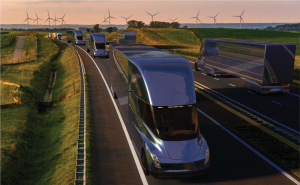This post was authored by Michelle Allen, Project Manager for the North Carolina Political Affairs team.
Offshore wind is taking off in the U.S., and the opportunity to be a key player is within North Carolina’s reach. A recent report commissioned by the NC Department of Commerce demonstrates North Carolina’s unique position to serve the industry’s needs and reap the economic benefits that new manufacturing and other necessary infrastructure will bring. Properly sited offshore wind is easy to get behind. It is reliable, pollution-free power from an established technology that’s already transformed energy economies in Europe and across the globe. The environmental benefits are significant, too. As a lifelong North Carolinian, I’ve seen first hand the impacts of climate change already taking its toll from the mountains to the coast. To make sure we’re doing our part to combat climate change, North Carolina leaders need to swiftly replace polluting power sources with clean energy. With strong winds blowing day and night off the North Carolina coast, adding offshore wind to the state’s generation mix would boost the resilience of our power system, create jobs and help make real progress toward North Carolina’s climate goals.












 Passenger cars have been leading the way, so far, in the development of zero emission technologies. But there’s also a movement underway to develop heavy-duty electric vehicles – like freight trucks and buses – that could have sweeping benefits for the climate, public health, and American jobs.
Passenger cars have been leading the way, so far, in the development of zero emission technologies. But there’s also a movement underway to develop heavy-duty electric vehicles – like freight trucks and buses – that could have sweeping benefits for the climate, public health, and American jobs.